-
ABOUT US
-
ACADEMICS
Curriculum Program
Departments
- English
- High School Chinese
- Primary and Junior School Chinese.
- High School Mathematics
- Middle School Mathematics
- Primary School Mathematics
- Music and Fine Arts
- Physical Education
- Physics
- Chemistry
- History and Geography
- Physical Science and Optional courses Department
- Middle School Biology
- High School Biology
- Social Sciences
- Computer Science
- Courses in Primary School
Achievements and Matriculations
College Counseling
Science & Technology Innovation Contest
Subject Competition
-
ARTS
-
ATHLETICS
-
AT SHSID
SHSID ∣ TIMES
PTSA
Club Exhibition
- 龙吟社
- Live 2 Drama
- Choir
- Hip-pop Dance Club
- The Primary School Dance Troupe
- Symposiums Club
- Biology Workshop
- You Shan
- VEX Robotic
- Peking Opera Club
- Baseball Club
- Model United Nations
- The World Scholar’s Cup
- Future Problem Solving Club
- United States Academic Pentathlon
- OM Club
- AMC Club
- Music for Patients
- SHSID Gazette
- Smile Charity
- Cultural Moments
- SciAcademy
- Stem Doge Alliance
- Chinese Debate Club
- IAA
- Mock Trial Club
- Zhengming Club
- Furry Friends
- GT-Racing
- Village Radio
- IMMC Club
- Creative Design and Intelligent Fabrication
- Future City Research Project
- ECOCAP
- AdvocaSEA
- SPDC
- Medishine
- Floorball Club
- Animusic MTC
- Wings Up
- All Booked
- Cyano
- Birding Community
Health and Wellness
Campus Safety
Cafeteria Service
-
ADMINISTRATION
-
ADMISSIONS
-
ALUMNI
Alumni Information
Honors Students
- Class of 2025
- Class of 2024
- Class of 2023
- Class of 2022
- Class of 2021
- Class of 2020
- Class of 2019
- Class of 2018
- Class of 2017
- Class of 2016
- Class of 2015
- Class of 2014
- Class of 2013
- Class of 2012
- Class of 2011
- Class of 2010
- Class of 2009
- Class of 2008
- Class of 2007
- Class of 2006
Who Studied at SHSID
SHS Foundation
-
DOCUMENTS
Middle School Math Department | Beyond the Ruler Indirect Methods in Mathematical
“Math is more than equations—it’s a way of seeing the world.”
When rulers and tape measures can’t reach, ancient wisdom steps in. From Egyptians using knotted ropes to measure land, to Eratosthenes estimating Earth’s circumference with just a stick and a shadow, people have long used creativity to extend the limits of measurement. Today, our 7th graders carry on this tradition with a hands-on “Geometry Challenge” across the school campus.
The journey began with students becoming historical investigators, tracing the evolution of indirect measurement. How did medieval architects scale towering spires? How do astronomers measure distant stars? These stories sparked their curiosity—math, they realized, is a tool for solving real-world problems.
Stepping outside the classroom, students worked in small teams using homemade clinometers, mirrors, and even their own shadows to tackle real-world challenges: How tall is that tree? How high is the flagpole? How wide is the pond? They experimented with different methods—mirror reflection, shadow ratios, angle measurements—and adapted their approaches with creativity and precision.
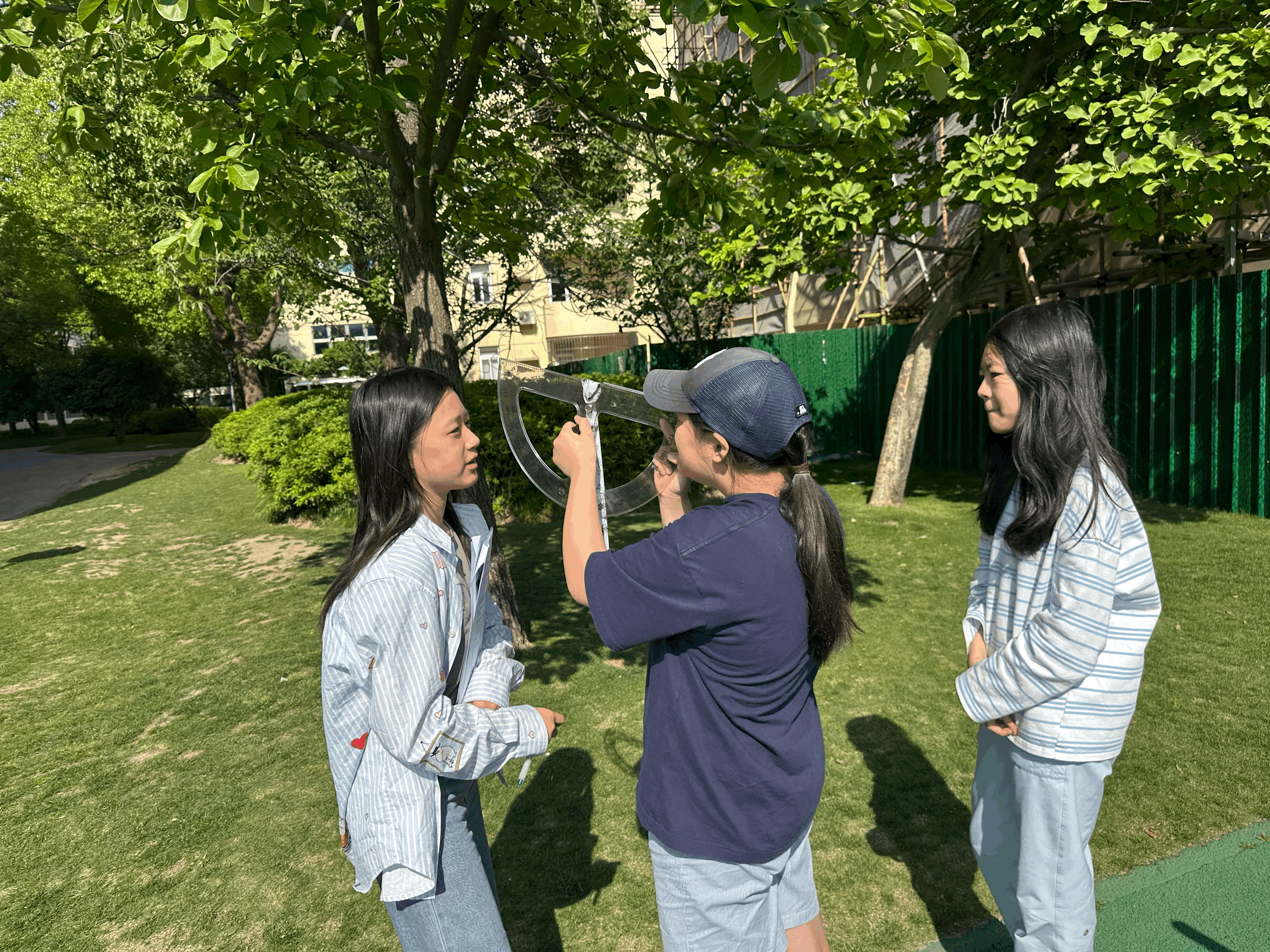

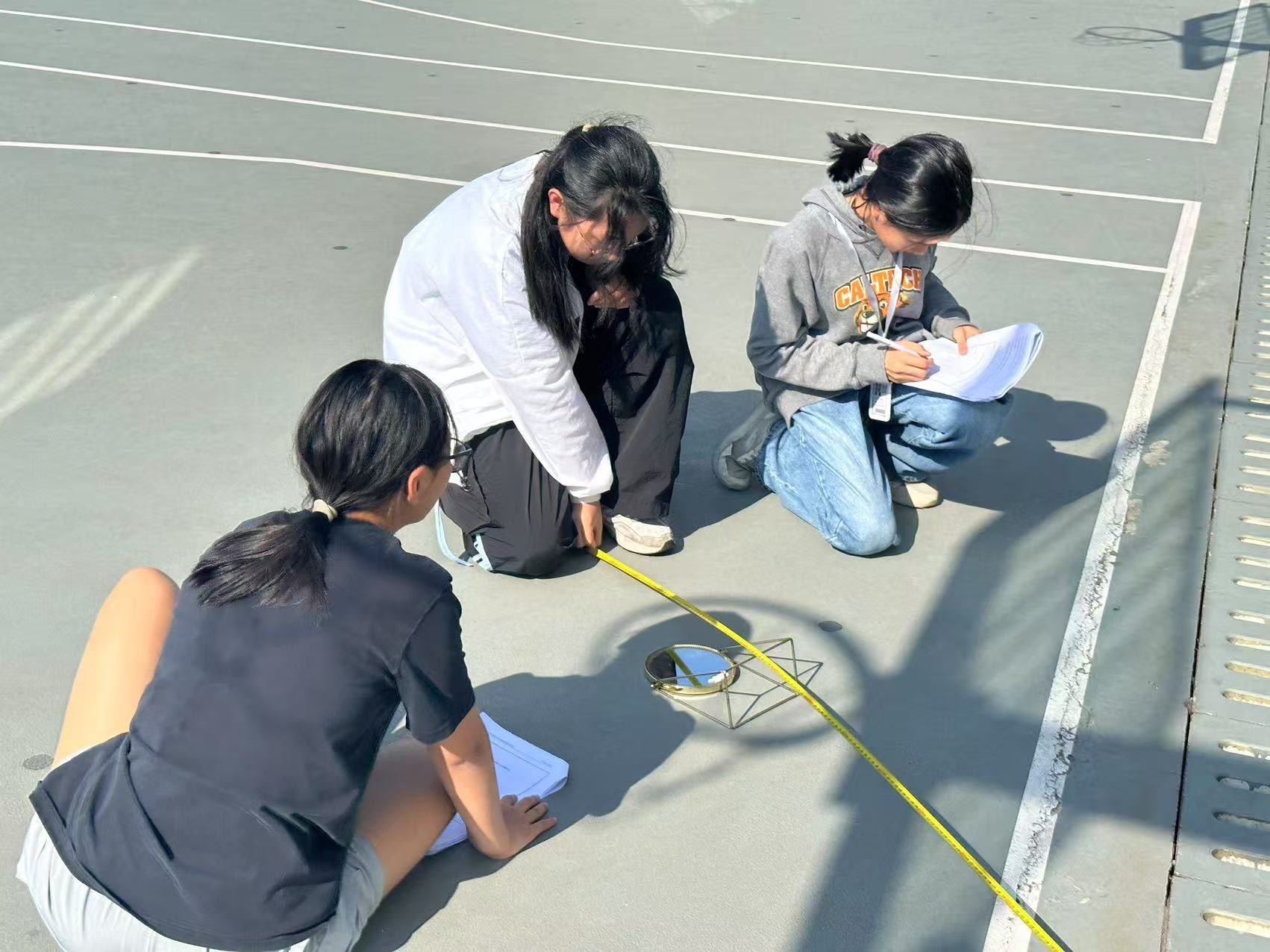
Their curiosity drove deeper thinking: “What happens if the sun goes behind a cloud?” “Can eye level replace full height in calculations?” One team even developed a “double-angle method” to calculate river width, demonstrating impressive mathematical thinking.
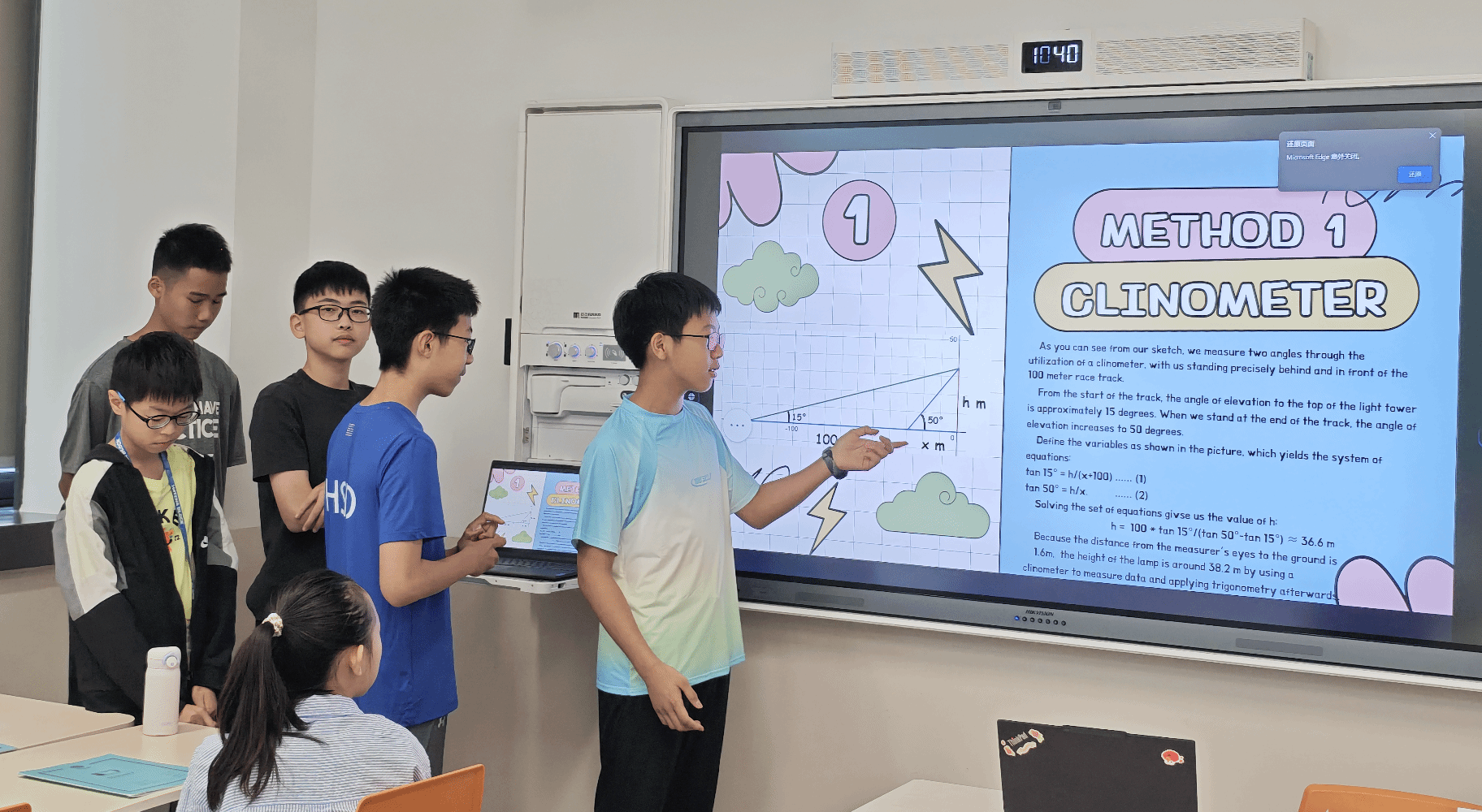
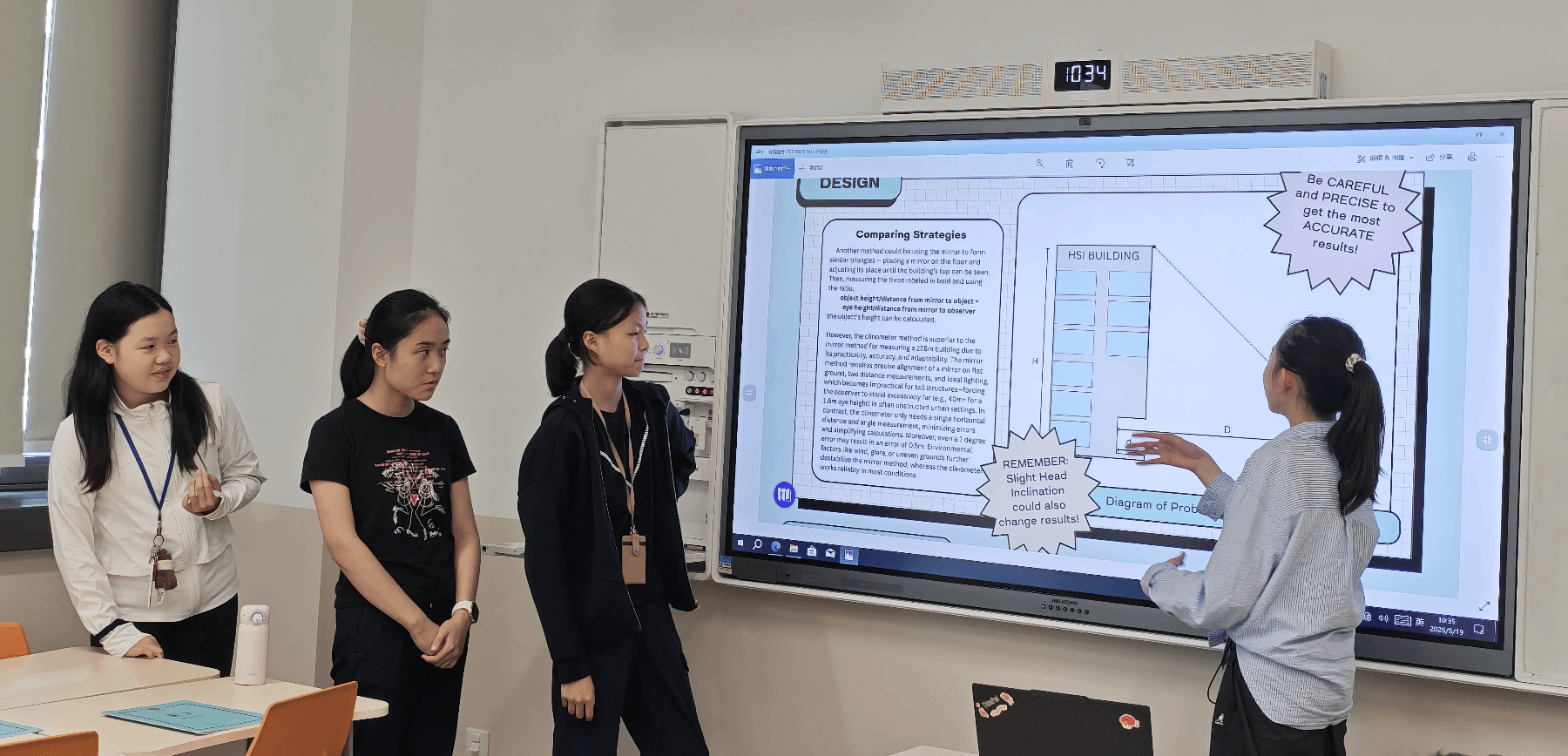
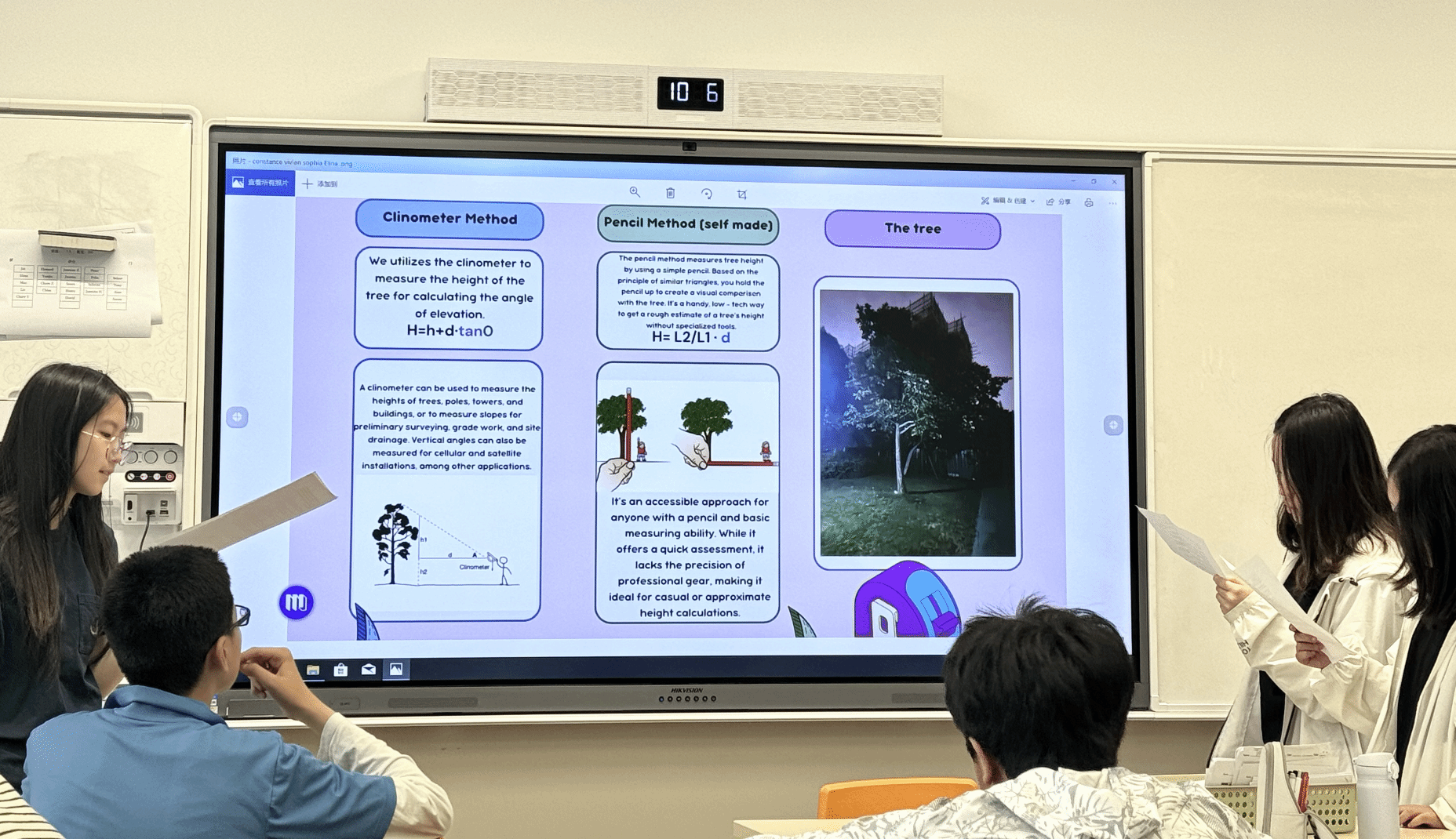
In the final showcase, students presented their work through hand-drawn diagrams, dynamic videos, and detailed data analysis. One group even used LEGO bricks to build scale models, turning complex math into something visual and hands-on. These creative formats reflected not just their understanding, but their ability to apply and express it.
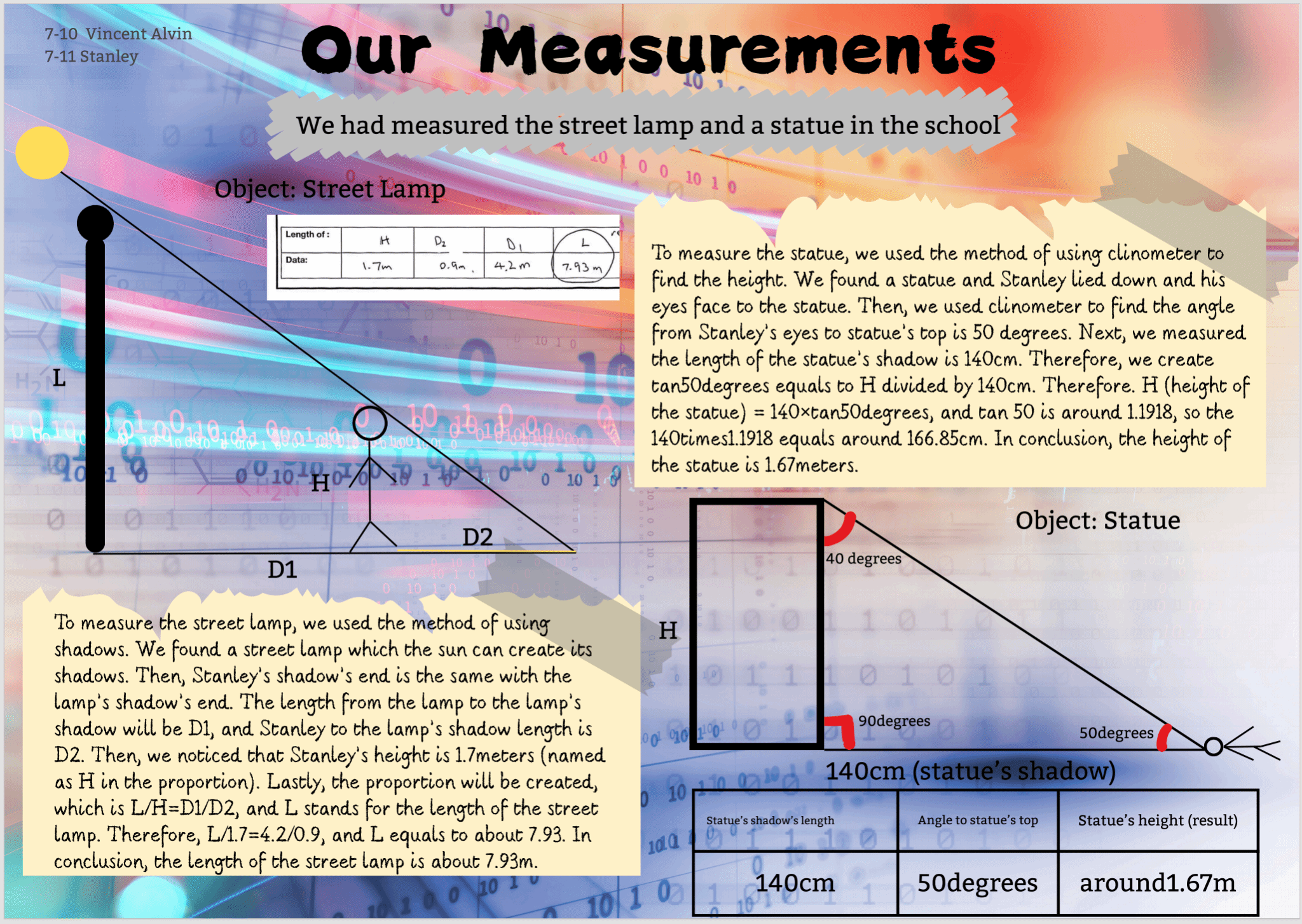
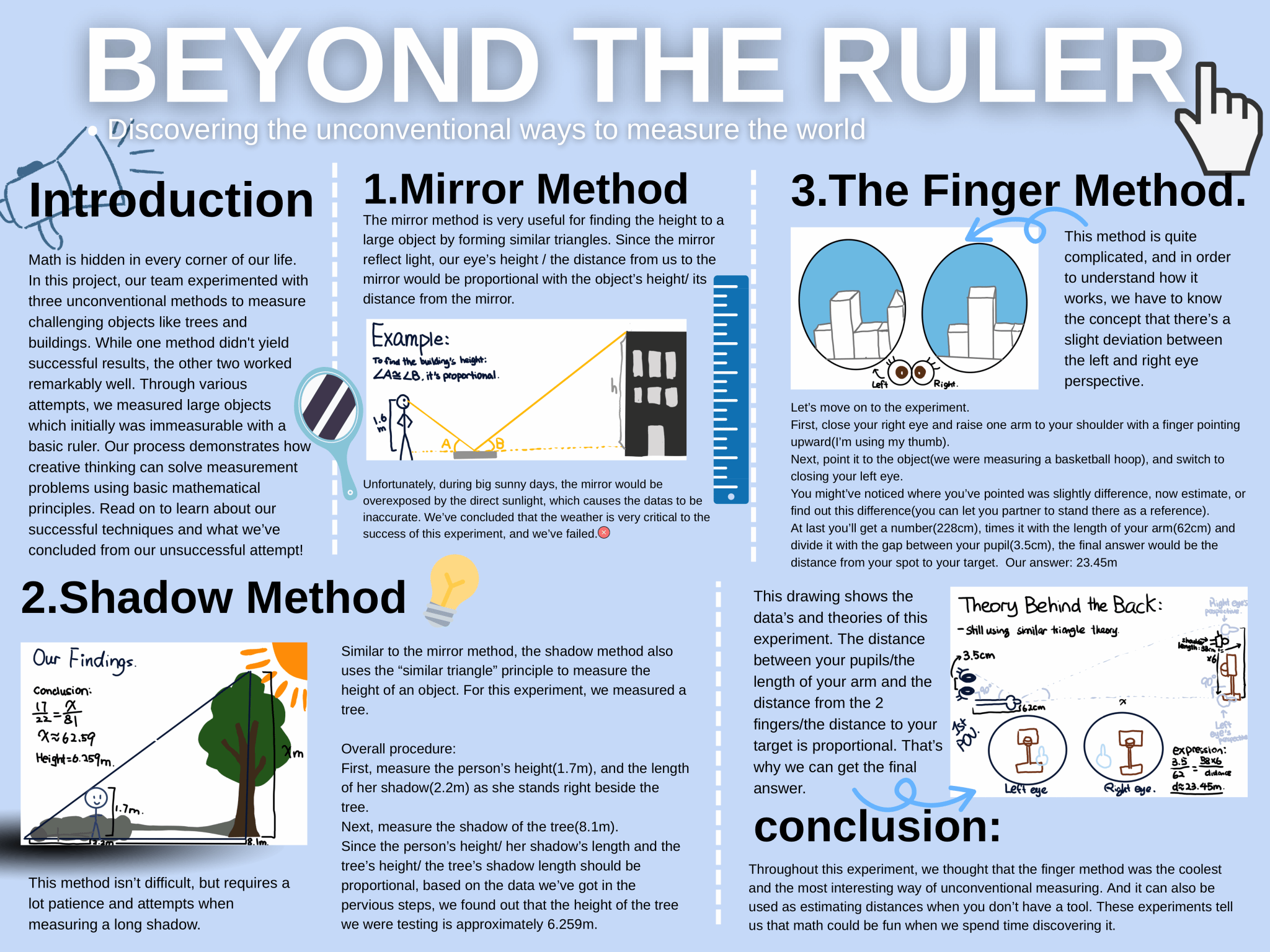
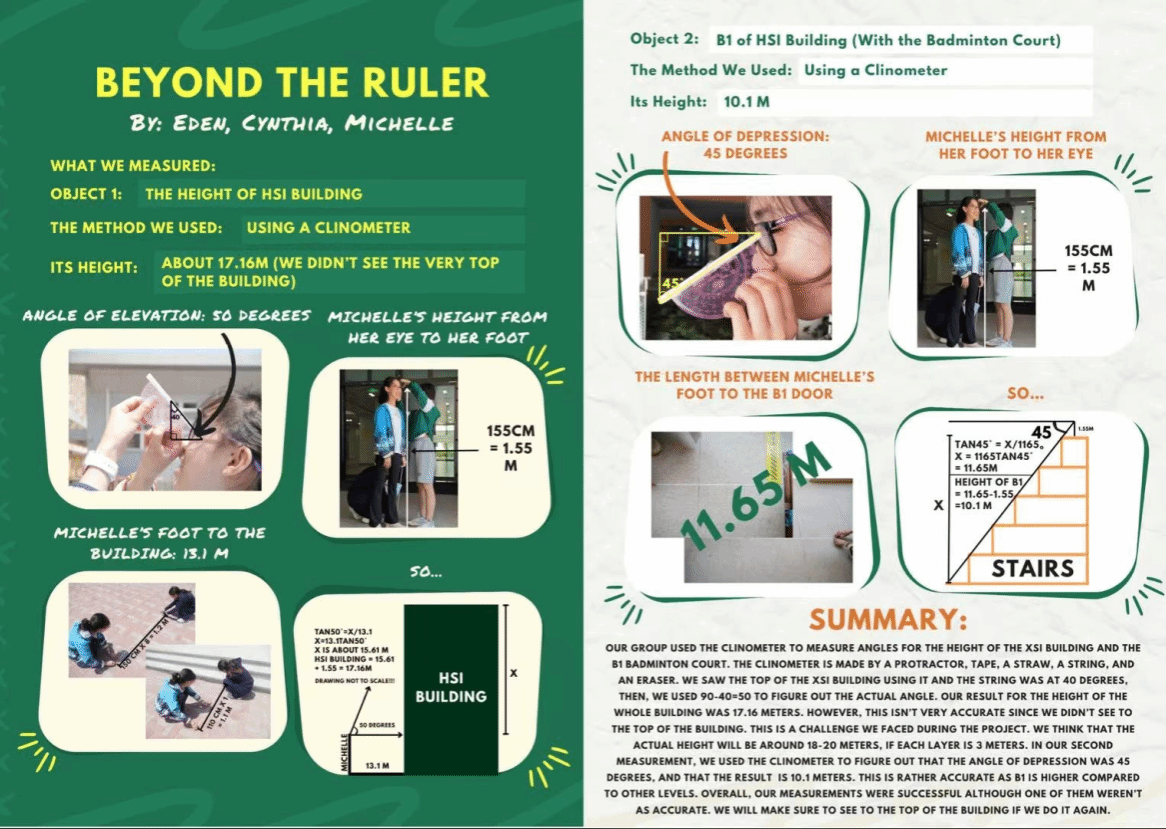
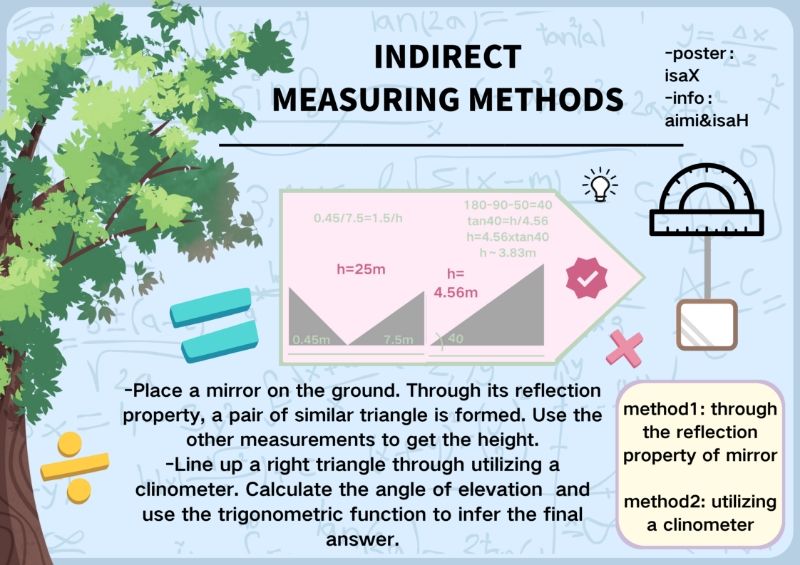
This indirect measurement project was more than a math lesson—it was an exploration of how math connects to life. It sharpened students’ observation, reasoning, and collaboration skills, and helped them see the world through a mathematical lens. Through this experience, they are growing into thoughtful, curious, and capable learners for the future.
Written by Wei Xu
Pictures by Grade 7 Math Teachers
Edited by Cong Luo
Reviewed by Zheng Wenyin, Chenli Shen, Cong Luo, Judah Kuhn